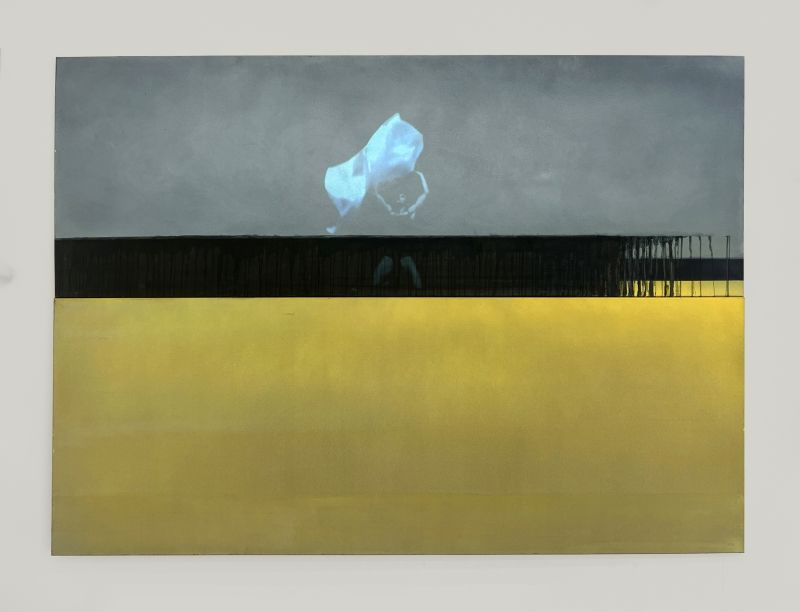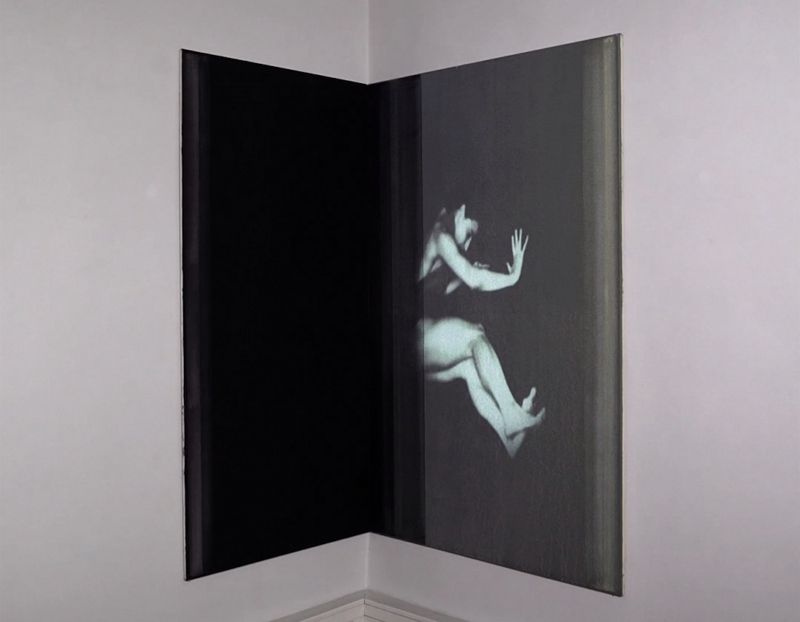For the project titled
Reenactment,
Lejman started a collaboration with the British artist Bianca O’Brien. Initially created as part of the
Madnicity-Pavillion
(during the Biennale di Venezia) in 2022, the series displays a
constructive discourse on stereotypes and common beliefs about mental
disorders. Here, Lejman paired up his paintings with ephemeral ghostly
scenes of a female figure, based both on religious representation in art
history and photographic archives of the former mental hospital at San
Servolo. The body is being presented as an object, directed frontally by
a pair of hands, wrapped in a white cloth that seems to represent both a
straightjacket, and a cloth taken directly from the Baroque tenebristic
painting. The ephemeral projection emphasizes the innovative hybrid
form of Lejman’s works – stressing the absence of representation.
Leaving behind the canvas to be looked at, 'the projected absence' makes
it evident that the painting is far more than just the projection
surface.


